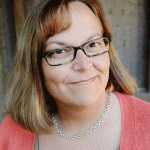Radical Archives – Question 4
November 2015
4How is an archive’s radicality or radical potential affected by relationships with users, collaborators, communities, and/or other institutions, in your experience?
The Transgender Archives exist to serve trans* communities first and foremost. We rely on community members to provide materials for our collections, and for some of our financial needs. We need community involvement to assist us with interpretations of the materials that we hold in trust for trans* communities. The goodwill of trans* communities is essential to our success. We strive to earn that goodwill by remaining responsive to the needs and interests of trans* communities.
Read this ResponseIn the beginning it was not clear how the university community and supporters would respond to this project. It helped that the library leadership was fully supportive. Washington University in St. Louis is a medium-sized independent school founded in 1853. It has a sizeable endowment and a substantial tuition. There is a heavy emphasis on research, service to the community, global citizenship, and civic engagement. 40% of the enrolled students identify as non-white. The events in Ferguson erupted ten miles away from the main campus, and the verdict was announced in a courthouse less than two miles away. And although the proximity of these events had a direct impact on university staff and students who lived and worked in these areas, the project team questioned whether there was enough trust in the community for people to submit content.
Read this ResponseThe radical potential of an archive to others largely depends on how those relationships are cultivated. In most cases, actual or perceived “radicality” needs to be understood through a process of negotiation, as it is not always obvious to everyone. The possibilities for an archive’s radicality may be shaped by tension or conflict, through which new aspects of radicality may emerge. In my experience, this demonstrates that the radicality of archives is rarely static.
Read this ResponseAs I discuss in response to question three, I believe the strength of an archive’s radicality is in its ability to build relationships and movements in the community. I believe there are many people who very much love and feel comfortable in the reading rooms of more traditional archival repositories—many who even get a thrill out of how “official” the procedures are to view items. When I was an undergraduate visiting the special collections for the first time, I remember how that sense of importance surrounding the reading room excited me; in fact, it was one of the reasons I wanted to be an archivist. However, I believe those same rules and procedures are often intimidating to many users and can discourage them from visiting archives, even when they may benefit from the materials. From my experience, radical archives have more extensive programming outside the archives, often in more community settings, which can introduce new audiences to archives or archival materials for the first time. For example, an institutional archive may have some exhibitions, but they are often limited to spaces within the institution, and cannot travel extensively—especially to community venues such as public libraries, community centers, or book fairs.
Read this Response




